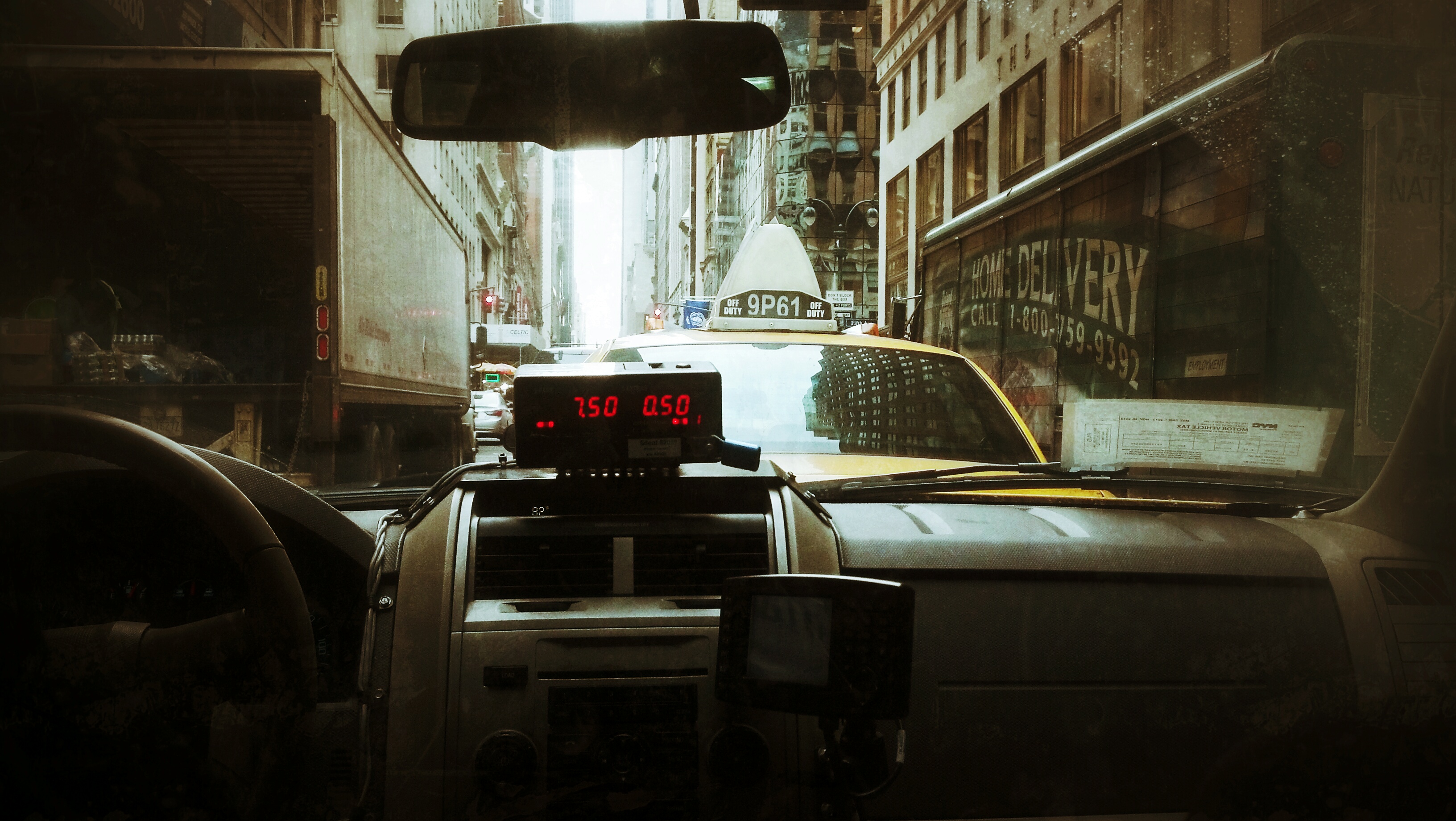The recent New York City taxicab driver hunger strike underscores a stark economic reality for cab drivers in major cities around the country: the medallion system is fundamentally broken, and it must be reimagined.
Taxicab medallions are a sort of permit to own a taxi and the primary licensing method used by major US cities including Boston, New York, San Francisco, and Chicago, that limits the total number of cab drivers allowed to operate. Leading up to a recent collapse in value, medallions had become wildly expensive, costing several hundreds of thousands of dollars to obtain. Particularly in immigrant communities, they were increasingly seen as an investment in a stable profession that seemed to provide a sure-fire path to prosperity. Over time, this has proven to be a false promise and a financial trap, mainly because of the incredible debt drivers often take on in order to purchase the right to drive a taxi. An American Dream fulfilled in the taxi industry has been incredibly elusive, and narratives of the difficulty of survival under crushing debt have played out around the country.
Only a string of taxicab driver suicides is what has finally prompted an examination of the deep despair caused by this system. This stands as a serious indictment of local leaders in major cities who have allowed this crisis to advance to its current state. “I’m going to be enslaved for the rest of my life,” said medallion-holding driver Mohamadou Aliyu to NBC Asian America. “Not only that I will never be able to pay [the medallion debt] off – my kids will never be able to pay it off.”
The intensity of the crisis is in part due to the widespread popularity of ridesharing services such as Uber and Lyft that have decimated the demand for medallions and left NYC drivers stranded with an average of $600,000 in debt. This is because Uber and Lyft drivers simply do not need to purchase medallions or be formally licensed with cities, making the licenses effectively obsolete. Between 2014 and 2018, national records show that rideshare apps ballooned from controlling 8 percent of the business ground-transportation market to 70.5 percent, demonstrating the rapid collapse of heavily indebted taxi drivers’ customer base.
Comparing this level of debt to the student debt crisis underscores the salience of this situation for drivers nationwide. On average, student borrowers owe just above a tenth of what NYC medallion drivers owe, or about $38,000. Evidently, the student debt burden in the US is far larger than the taxi driver debt crisis because of the tens of millions of student borrowers. Nevertheless, the acuity of this crisis for drivers deserves the serious focus of local leaders and policymakers.
This situation has become so severe that NY Attorney General Letitia James threatened to sue the city for using what she described as “unlawful” price manipulation mechanisms to open up a “trapdoor of despair” for NYC drivers, the vast majority of whom come from immigrant backgrounds. The intense price distortions came in part from allowing lenders to use predatory lending techniques with little regard for the loans’ solvency. This month, however, a deal was reached between NYC and the New York Taxi Workers Alliance that will see debt restructured to not exceed $170,000 in personal debt for drivers and to no longer allow debt to be left to family members after a driver’s passing. Despite this positive development, leaders like Senator Chuck Schumer and New York City Mayor Bill de Blasio should by no means be declaring victory given their continued failure to address the root causes of the debt crisis. There is simply no justification for New York or any major city to continue operating under a system that its own state government said “defrauded hundreds of medallion owners.”
The meteoric rise of Uber and Lyft has demonstrated the deep imbalance in the medallion market and the hypocrisy of government officials who have allowed it to continue. Removing enforceable caps on drivers would undoubtedly increase traffic congestion, which has already skyrocketed due to the sheer number of Ubers and Lyfts on roads across the country. None of America’s largest cities, however, have pursued a ban on ridesharing apps to address these traffic concerns in the wake of Uber and Lyft’s success, demonstrating the laissez-faire attitude cities had toward limiting traffic in recent years.
Still, concerns about traffic congestion, decreasing public transportation use, and excess air pollution are serious considerations in discussions on how to move away from the current medallion system. Regardless, these do not justify in the slightest the burden this system has wrought on drivers. There are certainly a few ways for a city to move away from paid medallions in a way that still regulates the number of drivers on its roads. Waitlists or periodic lotteries could be used to determine who can drive with a medallion. Despite the advantages of moving toward time or luck barriers, these regulations would only be truly effective if ride-hailing app drivers were subject to the same rules. This would require a new level of regulation that simply hasn’t been present since these companies were founded.
The transportation market has undergone a revolution in the past decade that simply won’t be undone. Recent action by New York City to cap personal medallion debt at $170,000 doesn’t go far enough to address the scope of this crisis for many marginalized groups in major cities. Whether evolving past paid medallions takes the form of a lottery or waitlist system, we must help taxicab drivers crushed by debt and the false promise of security by canceling these loans and completely redesigning this system.
Photo: Image via Flickr (Roman Iakoubtchik)
